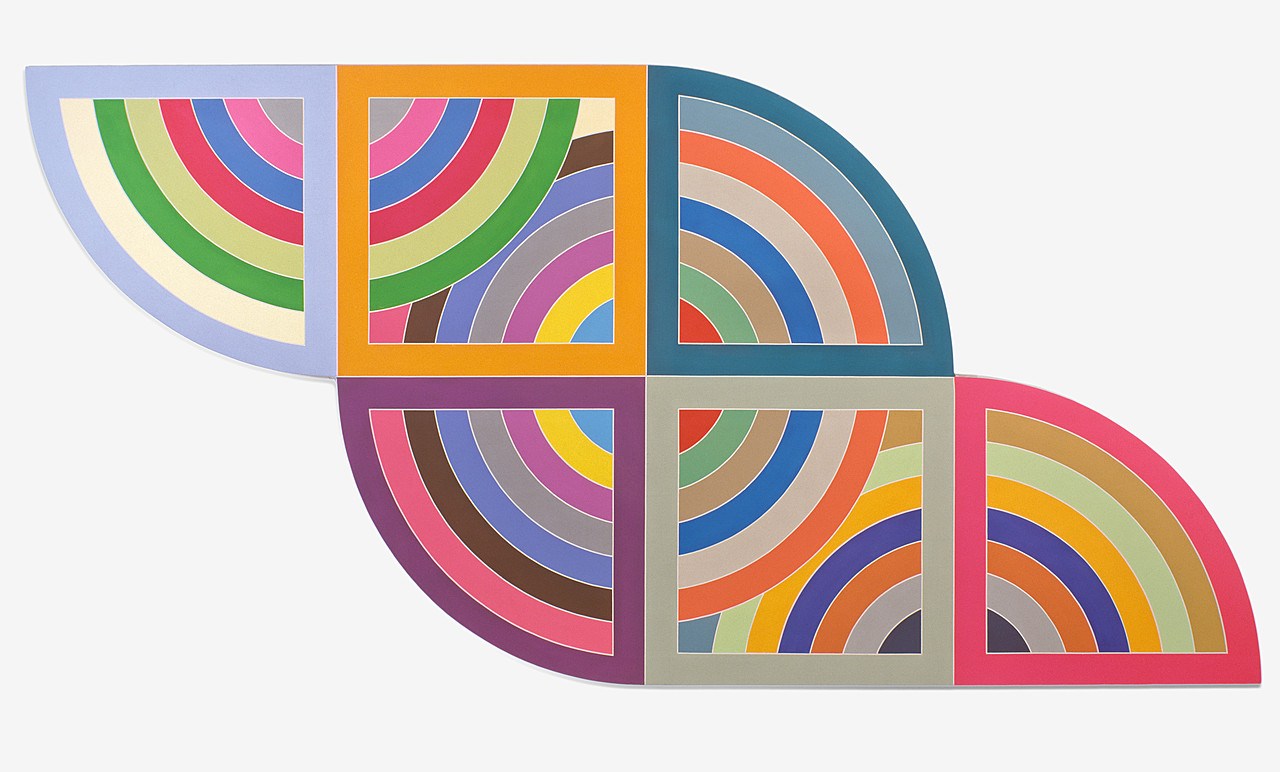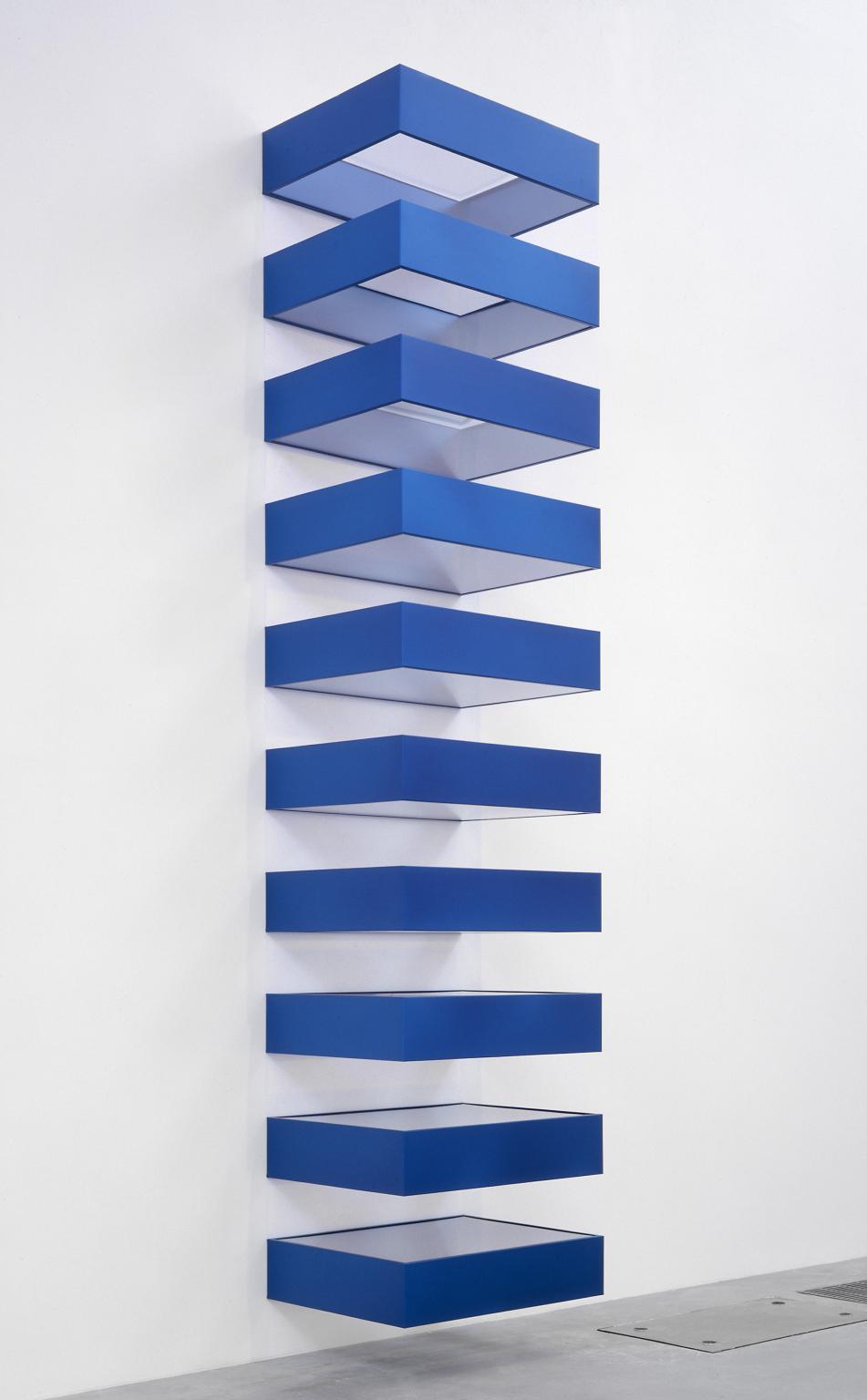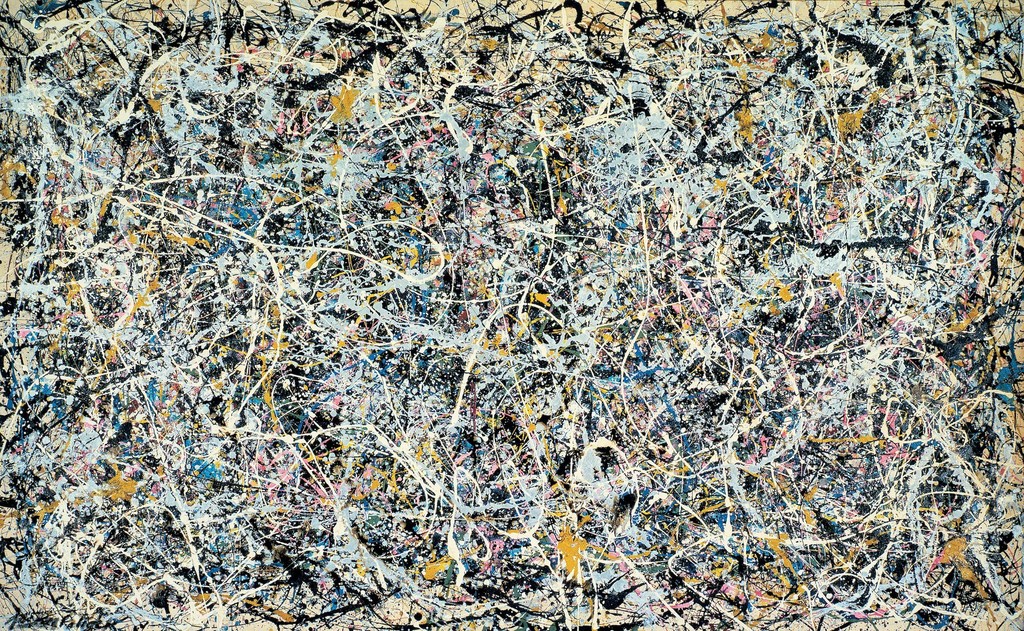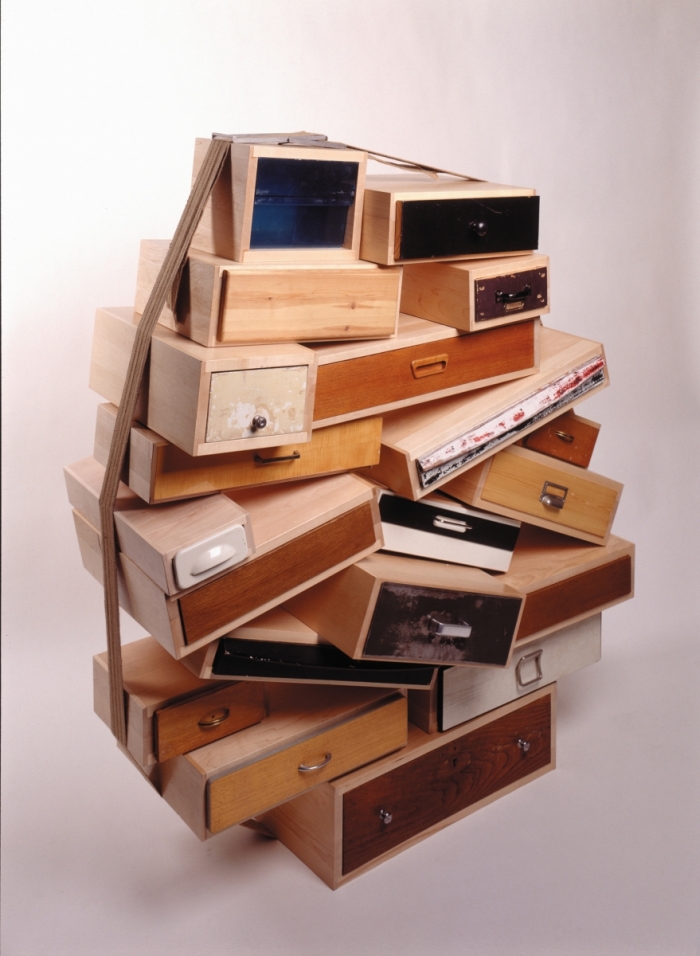Overview


Minimalism (also known as ABC art, literal art, reductive art) is a major movement of postmodernist art. It started in the late 1950s but only peaked from mid to late 1960s. Minimalism artists created objects which often blurred the boundaries between painting and sculpture, and were characterised by unitary, geometric forms and industrial materials.
There are three main reasons as to how Minimalism came about. Firstly, Minimalism was birthed from abstract art, where people painted pictures with no reference to things visible to the real world (no people, landscapes, still life, etc). Hence, art does not have to resemble anything.
Secondly, Minimalism was a reaction to Abstract Expressionism, the most prominent art style in the 1950s. Abstract expressionism was an art movement that had a great emphasis free and spontaneous personal emotional expression. On the other hand, Minimalism is the opposite of Abstract Expressionism. The artists who were part of the Minimalism movement felt that Abstract Expressionism was too personal and insubstantial, they strongly believed that the artwork should not encompass any trace of emotion or agenda imposed by the artist. It should refer to itself and itself only.
Thirdly, following the second point, Minimalism artists focused greatly on the materiality of the artworks instead of their meaning. This was heavily inspired by Russian Constructivism and Marcel Duchamp’s readymades, where artists made use of a variety of existing materials to construct their artworks, hence giving their artworks an industrial appearance. The increased focus on materiality leads to phenomenology of minimalism. This refers to an approach that concentrates on the study of consciousness and the objects of direct experience. In the Minimalism context, an emphasis is placed on the physical space that the artwork occupies since this will affect the experience of interacting with the artworks.
In this essay, I will be exploring the characteristics of Minimal art, as well as using quotes from prominent Minimalism arts to illustrate how their ideals influenced the artworks that were produced. Additionally, I will briefly delve into the other art movements that shaped or were related to Minimalism in an annex figure.
Characteristics

Minimal art aims to be non-expressive, devoid of any big ideas, social agendas and subject matters. In simpler terms, it is art for art’s sake without involving any emotions.
- Geometrical: Non-representative of the external world or narratives
- Repetitive
- Smooth finish, no visible brush strokes: No signs of the gestural movement of the artists, which can be interpreted as emotions. The thought process behind each decision is removed.
- Monochromatic palettes of neutral colours: Most basic and neutral. Colours don’t express feelings or mood. Simply to delineate space
- Precise and hard-edged borders between colours (no shading)
- Use of plain, industrial, factory-made or store-bought, mass-produced materials (modern materials also defy the traditional artistic materials)
Key quotes from prominent Minimalism artists
In this section, I will be using key quotes from prominent artists to illustrate how their ideals influenced the artworks that were produced.
“All I want anyone to get out of my [works] and all I ever get out of them is the fact that you can see the whole idea without any confusion. What you see is what you see.” – Frank Stella


‘The Black Paintings’ was a series of paintings that comprised of concentric bands and stripes. Frank Stella, one of the key Minimalism painters, hand-painted every painting with black enamel paint on raw paintings. This series of paintings encompassed the characteristics of Minimalism art perfectly – the finish of the paint was smooth, the only colour used was black, and the concentric bands and stripes form geometrical shapes. The combination of these characteristics give the paintings an overall cold and stoic presence, devoid of any emotions.
Since the Renaissance period, the idea that paintings were a window into a three-dimensional space dominated the era. Hence, paintings reflect the real world and were used as a tool to tell stories. Therefore, paintings were never viewed as simply canvas with paint. Frank Stella rejected this ideology, along with the emotional expression surrounding Abstract Expressionism. This led him to drive home the point that the paintings he produced were simply canvas with paint on them. There was no hidden meaning or agendas, what the viewers see (canvas with paint) were literally what they see. The focus was on the paintings themselves – their colour, paint quality, unevenness of the stripes, etc. The canvas which Frank Stella painted on were thicker than conventional canvases as well, which further emphasises on the ‘thing-ness’ of the artwork.
The phrase “What you see is what you see” has a clever play on words as well. The first “What you see” refers to what the viewers see literally with their eyes, and the second “what you see” refers to what is being processed and interpreted in their minds. Since there is no meaning to be uncovered in Frank Stella’s paintings, his goal was to create a sense of rhythm and illusion through the colours, geometrical forms, etc, in his paintings.
“It is what it is and it ain’t nothing else.” – Dan Flavin

Dan Flavin is a prominent Minimalism sculpture who is well-known for working with pre-fabricated materials rather than hand-crafted ones. What made him stand out even more is his choice of pre-fabricated material – fluorescent lights. Dan Flavin explained that working with fluorescent lights allowed him to focus on the light itself and use it to ‘sculpt’ (transform) the exhibition space.
Like Frank Stella, Dan Flavin has denied that his sculptural light installations had any kind of symbolic meaning, stating: “It is what it is and it ain’t nothing else”. He also emphasised that he wanted the art objects to be valued as much for their material qualities as for their conceptual meaning (thing-ness and such-ness of the materials). His subsequent development of a vocabulary of “corners,” “barriers,” and “corridors” engaged the environment his work occupied and revealed his interest in reconceptualising sculpture in relation to space, which in turn makes the museum experience an interesting and conventional one.
“Less is more.” – Ludwig Mies Van Der Rohe

This term was originally coined by poet Robert Browning, but made popular by architect Ludwig Mies Van Der Rohe. Mies said this in the context of the Great Depression and period after World War I, where many Americans had to live with less, but still desired to make their home appear more stylish. This phrase meant that when less decoration is properly deployed, it has more impact that a lot of decoration. This motto is in-line with Sol Lewitt’s philosophy, ‘it is best that the basic unit be deliberately uninteresting so that it may more easily become an intrinsic part of the entire work”. He felt that if the basic unit is too complicated, it would distract the viewer from the overall form’s arrangement and unity.
Since many minimalistic sculptures are so simple, the interaction between the sculptures, space and the viewer’s presence is greatly emphasized. The simplicity of the sculptures draws people in naturally. People become more aware of their positioning in the room and how the different positions bring them different viewpoints of the same sculpture. This idea is what Dan Flavin and other Minimal artists strived for in their works too.
“Everything should be made as simple as possible, but not simpler.” – Albert Einstein
Albert Einstein, the great physicist who discovered the Theory of Relativity, said this in the context of scientific education. Science concepts can be complicated and difficult to grasp, hence Albert Einstein believed that it was desirable to explain complex concepts as simply as possible, without losing the essence of the meaning. However, there is a point where these complex concepts cannot be reduced into something simpler or else they would lose their meaning. In this case, Minimalism takes it a step further by reducing art to the point where it has no meaning at all. Instead, the focuses are on the materiality of the artworks and the interactions between the viewers and the artworks.
Annex Figure
This annex figure comprises of art movements that are related to Minimalism.
Figure A: Russian Constructivism

- Objects were to be created not in order to express beauty, or the artist’s outlook, or to represent the world, but to carry out a fundamental analysis of the materials and forms of art, one which might lead to the design of functional objects.
- The form an artwork would take would be dictated by its materials (not the other way around, as is the case in traditional art forms, in which the artist ‘transforms’ base materials into something very different and beautiful).
- Desires to express the experience of modern life – its dynamism, its new and disorientating qualities of space and time.
Figure B: Abstract Expressionism

- Imagination of the artist are the focus and elements of the creativity shown on canvas
- Non-representational statement with line, colour and size as well as the aggressive mingling of colours, shapes and forms that creates a painting of pure thought and emotion
- Share the desire of using art to express the subconscious or untouched
- Minimalism was a response to this art movement.
Figure C: Droog

- Droog, Dutch for “dry,” is a Dutch designer collective renowned for conceptual yet pragmatic design.
- Droog designers commonly utilize recycled materials in reference both to the ready-made movement established by Marcel Duchamp and consumerism.
- Makes use of materials that will conjure up old memories.
Figure D: Supernormal

- A design movement was born when a set of stools designed by Naoto Fukasawa at the Milan Furniture Show were mistaken for everyday objects
- Fukasawa and Morrison re-examine designed objects that are “nothing special” and re-define them as having special power.
- The appeal of supernormal lies in the idea that our relationship with things we usually aren’t aware of is richer than the things that are viewed in terms of design
- Supernormal is a quietly seen unseen, a refreshing surprise that re-awakens us to the values in design that we already held important: an unobtrusive ordinariness, an inherent usefulness, and a streamlined simplicity that allows the objects to easily become, and stay, a part of our lives.
- Non-gimmicky, adjust seamlessly into the environment
- Closely tied with user experience, the ability to make the experience intuitive
- Innovative
Figure E: Mono-ha

- Mono-ha works are as much about the space and the interdependent relationships between those “things” as the “things” themselves. Making the viewer become aware of his position in relation to the work is also something which the Mono-ha artists aimed for.
- anti-modernist, primarily sculptures and installations that incorporated basic materials such as rocks, sand, wood, cotton, glass and metal, often in simple arrangements with minimal artistic intervention. More experiential than visual, Mono-ha works tended to demand patience and reflection.
- Mono-ha shared many commonalities with Supports/Surfaces in France, Arte Povera in Italy, and Minimalism in the United States.
Conclusion
The human brain is wired to be curious and this leads us to seek out meaning in the things around us. Hence, when people try to find meaning in Minimal art, they are not able to find any. This causes them to become frustrated and this is one of the reasons why Minimalism has received many backlashes. Many view Minimalism as pretentious and do not consider it real ‘art’. However, I argue that the whole point of minimalism art is that there is no meaning to be uncovered at all. No wonder people are left frustrated because they are trying to uncover meaning that does not exist in the first place.
Also, many look at minimalism art and think to themselves, ‘I can do that do’. They cannot seem to wrap their minds around what’s so profound about these simple paintings and sculptures. In fact, it is more difficult to create a minimalistic artwork than a complex one because every single detail stands out and matters. The artist can no longer hide the imperfections behind decorations and ornamentation.
I believe that Minimalism is a radical art movement because it is not afraid to break the rules and be unconventional. While Minimalism’s sole focus is on the materiality of the artwork itself, it also encourages the viewers to be aware of their presence around the works and how they would interact with the works physically. This added dimension of interactivity is what makes Minimalism stand out for me as compared to other art movements.
References
- http://www.visual-arts-cork.com/history-of-art/minimalism.htm
- https://study.com/academy/lesson/minimalist-art-definition-characteristics-famous-painters.html
- http://understandingminimalism.com/introduction-to-minimal-art/
- http://www.artnews.com/2015/07/10/what-you-see-is-what-you-see-donald-judd-and-frank-stella-on-the-end-of-painting-in-1966/2/
- https://www.theartstory.org/movementminimalism.htm#concepts_and_styles_header
- http://articles.chicagotribune.com/2008-04-18/entertainment/0804170181_1_minimal-pop-art-art-professionals
- http://emerald.tufts.edu/programs/mma/fah188/sol_lewitt/paragraphs%20on%20conceptual%20art.htm
- http://uk.phaidon.com/agenda/art/articles/2018/february/08/understanding-stella-the-blackpaintings/
- https://www.theartstory.org/artist-flavin-dan.htmhttps://opinionator.blogs.nytimes.com/2010/07/01/when-less-was-more/
- http://exasperated-viewer-on-air.tumblr.com/post/31991555120/by-koji-enokura-mono-ha-and-minimalism-with
- https://vanseodesign.com/web-design/whyminimalism/
- https://abstractexpressionismishidden.weebly.com/characteristics.html
- https://collections.dma.org/essay/Mg3rJ3VDhttps://medium.com/design-philosophy/super-normal-c1d22838572a
- https://www.kaufmann-mercantile.com/field-notes/post/16583/super-normal-design
- https://www.nytimes.com/2006/06/11/style/11iht-dlede12.1944160.html
- http://www.nobuosekine.com/mono-ha/
- http://cf.libguides.com/modern/min
- https://www.theartstory.org/movement-constructivism.htm
Image sources:
- https://www.guggenheim.org/artwork/4003
- https://www.tate.org.uk/art/artworks/judd-untitled-t07951
- https://www.tate.org.uk/kids/explore/who-is/who-frank-stella
- http://uk.phaidon.com/agenda/art/articles/2018/february/08/understanding-stella-the-black-paintings/
- https://www.youtube.com/watch?v=jhdPHT4N55A
- http://www.remyveenhuizen.nl/work/furniture/chest-drawers-you-cant-lay-down-your-memory
- http://thescoutmag.com/blog?page=102
- http://exasperated-viewer-on-air.tumblr.com/tagged/monoha
